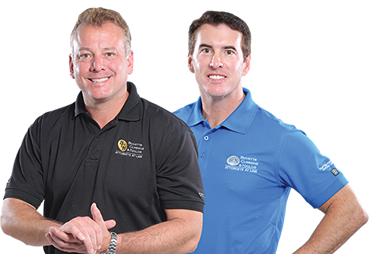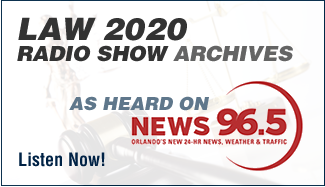Homeowners Insurance Law
Legal Help with Insurance Claims
Sometimes homeowners find that their insurance company is unwilling to pay valid claims for damages. The insurer may deny the claim or delay payment to you. Both can have devastating effects on a homeowners’ ability to recover after a major loss. The insurance company may also undervalue your loss, or not agree to pay to have the problem fixed correctly. That is why you need a good Homeowners insurance law Attorney.
Enforcing the Contract
An insurance policy is a contract between a homeowner and an insurance company. We make sure the insurer sticks to the terms of these contracts. If the insurance company denied valid claims or unreasonably delayed payment, we may sue them for bad faith and obtain punitive damages in addition to the coverage you were originally owed. *
If you are a Lake county home owner with a disputed insurance claim, please call or email the law firm of Boyette, Cummins & Nailos, PLLC, for your free consultation*. Our attorneys represent people with insurance disputes throughout Florida. We also deal with Homeowners insurance litigation in Clermont, Leesburg and Orange County Florida.
Once you’ve submitted your claim to your insurance company, a claims adjuster will usually be assigned to your claim to investigate. You should receive a phone call, letter or email from the adjuster introducing him/herself and informing you of the general process of their company. The adjuster will review your policy to see what coverage and deductibles you have and evaluate the type and extent of damage sustained. Contact BCN Law firm for a free consultation* at 855-LAW-2020 to go over the initial claim. A good Homeowner Insurance Law Attorney can spot a settlement problem.
Homeowners Insurance Law Claims can be simple or difficult.
Simple claims. In simple cases where damage is minimal (siding blew off of your house during a storm), an adjuster may have you get an estimate of the damage and just pay to replace the siding less your deductible, of course. An in-person visit probably won’t occur unless your agent/adjuster lives close by and the amount of paperwork needed is usually minimal.
Difficult claims. In difficult cases where you’ve experienced major damage (your roof collapsed), an adjuster will likely come by to assess the damage in person, take photos and discuss what needs to be done next, such as getting estimates and filling out claim and estimate forms.
How long does the process take? Generally speaking, in Lake or Orange County Florida, easy claims can be settled in a matter of weeks. Difficult cases may, and generally do, take much longer, especially when several estimates are needed or your contractor is not ready to perform the repairs right away. However, determining an exact amount of time is difficult since every claim has its own facts and circumstances. It’s important to check the status of your claim on a regular basis.
Home insurance, also commonly called homeowners insurance (often abbreviated in the real estate industry as HOI), is the type of property insurance that covers private homes. It is an insurance policy that combines various personal insurance protections, which can include losses occurring to one’s home, its contents, loss of its use (additional living expenses), or loss of other personal possessions of the homeowner, as well as liability insurance for accidents that may happen at the home. It requires that at least one of the named insured occupies the home. The dwelling policy (DP) is similar, but used for residences which don’t qualify for various reasons, such as vacancy/non-occupancy, seasonal/secondary residence, or age.
It is a multiple-line insurance, meaning that it includes both property and liability coverage, with an indivisible premium, meaning that a single premium is paid for all risks. Standard forms divide coverage into several categories, and the coverage provided is typically a percentage of Coverage A, which is coverage for the main dwelling.
The cost of homeowners insurance often depends on what it would cost to replace the house and which additional riders ”additional items to be insured”are attached to the policy. The insurance policy itself is a lengthy contract, and names what will and what will not be paid in the case of various events. Typically, claims due to floods, or war (whose definition typically includes a nuclear explosion from any source) is excluded. Special insurance can be purchased for these possibilities, including flood insurance. Insurance must be updated to the present and existing value at whatever inflation up or down, and an appraisal paid by the insurance company will be added on to the policy premium. Fire insurance requires a special premium charge, plus the addition of smoke detectors and on-site fire suppression systems in order to qualify.
The home insurance policy is usually a term contract, a contract that is in effect for a fixed period of time. The payment the insured makes to the insurer is called the premium. The insured must pay the insurer the premium each term. Most insurers charge a lower premium if it appears less likely the home will be damaged or destroyed: for example, if the house is situated next to a fire station, if the house is equipped with fire sprinklers and fire alarms. Perpetual insurance, which is a type of home insurance without a fixed term, can also be obtained in certain areas.
Types of policies
Currently, the ISO has seven standardized homeowners insurance forms in general use:
HO1 -Basic Homeowner Policy
A basic policy form that provides coverage on a home against 11 listed perils; contents are generally included in this type of coverage, but must be explicitly enumerated. The perils include fire or lightning, windstorm or hail, vandalism or malicious mischief, theft, damage from vehicles and aircraft, explosion riot or civil commotion, glass breakage, smoke, volcanic eruption, and personal liability. Exceptions include floods, earthquakes.
HO2 -Broad Homeowner Policy
A more advanced form that provides coverage on a home against 17 listed perils (including all 11 on the HO1). The coverage is usually a “named perils” policy, which lists the events that would be covered.
HO3 -All Risk Homeowner Policy
The typical, most comprehensive form used for single-family homes. The policy provides “all risk” coverage on the home with some perils excluded, such as earthquake and flood. Contents are covered on a named peril basis.
HO4 -Renter’s Insurance
The -Tenant form is for renters. It covers personal property against the same perils as the HO2.
HO5 – Premier Homeowner Policy
Covers the same as HO3 plus more
HO6 – Condominium Policy
The form for condominium owners.
HO8 – Older Houses
The “Modified Coverage” form is for the owner-occupied older home whose replacement cost far exceeds the property’s market value.
If you have any question or concerns about a disputed Homeowners Insurance Law claim please call or email the law firm of Boyette, Cummins & Nailos, PLLC, for your free consultation*.








